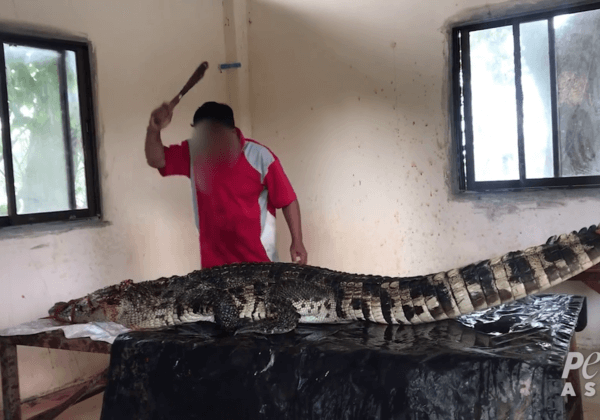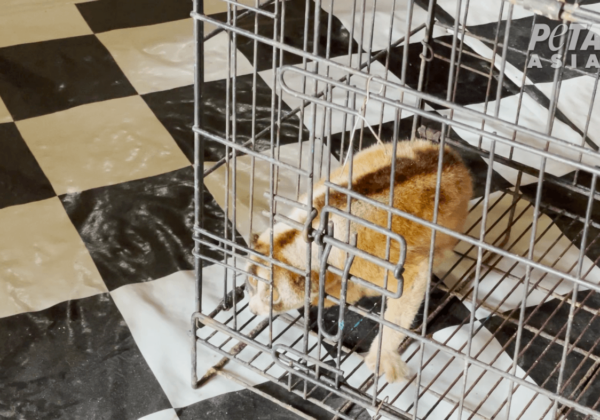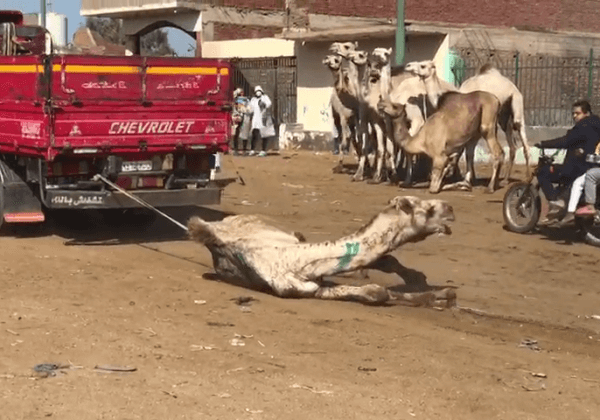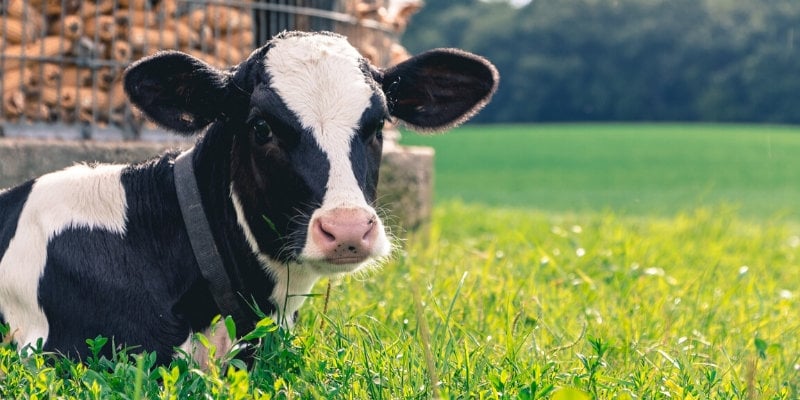World Wildlife Day
This year’s official United Nations World Wildlife Day’s theme is “The future of wildlife is in our hands,” and elephants are the main focus of the global campaign. These animals are some of the most emotional beings on Earth. They love, play, grieve, seek out friends, and thrive in the company of their family members. But they’re still killed by trophy hunters, and there are many traffickers who make a profit from selling ivory. In Asia, poaching has become increasingly common, while other elephants are being captured and held captive in zoos.
Here is an official poster for #WorldWildlifeDay 2016. See more at https://t.co/zYdkE2J6jw#InOurHands#WWD2016pic.twitter.com/fwkHcIkRJv
— World Wildlife Day (@WildlifeDay) February 9, 2016
Trophy Hunting and Poaching
Trophy hunters are over-privileged cowards who pay a hefty price to be handed a weapon so that they can gun down vulnerable animals. Just a few months ago, Rainer Schorr, the CEO of the Berlin-based investment and real estate company Rainer Schorr Beteiligungsgesellschaft, gunned down an elephant believed to be the largest killed in Africa in 30 years.
BREAKING: Man who spent $60,000 to kill one of Africa’s largest elephants identified as Rainer Schorr, CEO of RSB. https://t.co/JevmYB8Z6P
— PETA (@peta) October 20, 2015
Last year, Cecil the lion made headlines when an American dentist killed him using a bow and arrow in Zimbabwe. Since then, Botswana, which shares a border with Zimbabwe, has made it clear that killing animals for “sport” is not welcome in the country.
Jeff Ramsay, a government spokesperson from Botwana, explained the government’s decision:
“It is our stern belief that safari hunting of threatened species such as lions has the potential to undermine our regional anti-poaching efforts as it encourages illegal trade which in turn promotes poaching.”
Botswana has set a wonderful example for how governments can take real action to help animals. And in more good news in the campaign against hunting, airlines such as Delta Air Lines and American Airlines are banning the transport of all lion, leopard, elephant, rhinoceros, and buffalo “trophies” (i.e., body parts) worldwide as freight. This will make it much more difficult for hunters to fly home the decapitated heads of the animals they’ve murdered.
Sadly, shortly after the news of Cecil’s tragic death went viral, photos emerged of the son of American billionaire tycoon Donald Trump posing with a knife in one hand and the severed tail of an elephant he’d shot in the other.
#Donaldtrump son kills African elephant,cuts off tail to show off http://t.co/74l9YouWv3 #WalterPalmer #CecilTheLion pic.twitter.com/P7ppYkm5Va
— Zimbabwe Today (@ZimToday) July 28, 2015
Up to 38,000 elephants are killed each year by poachers in Africa. According to many conservationists, it is estimated that within 10 years there will be no more African elephants in the wild. The price of an ounce of ivory has skyrocketed from $150 to $1,300 because of demand from Southeast Asia and China. Contrary to popular belief, elephants cannot regrow their tusks – the only way to obtain an elephant tusk is to kill the elephant. Find out more about “the bloody faces of ivory.” In order to save elephants, we need to continue to spread the word about poaching,
What You Can Do
Before you support a “wildlife” or “conservation” group, ask about its position on hunting. Some groups, including the National Wildlife Federation, the National Audubon Society, the Sierra Club, the Izaak Walton League, The Wilderness Society, and the World Wildlife Fund are in favor of or do not oppose sport hunting.
Entertainment
Elephants are wild animals—they’re not meant to be ridden by humans. Despite the extreme “training” methods used to make them submit to humans, they can never be fully “tame.” And just as a human might, an elephant who has endured years of chaining, beatings, and other abuse can suddenly “snap” and turn on his or her captors. Such incidents are not unusual—about a dozen deaths are thought to have occurred in Thailand in the past 15 years.
Zoos rob elephants of the opportunity to fulfill their most basic needs, including the need to maintain relationships with their family members and to walk long distances. Lack of exercise and long hours standing on hard surfaces are major contributors to foot problems and arthritis. Many elephants in zoos die decades short of the expected life span of their wild counterparts.
Elephants require vast spaces to roam, socialize, and express their natural behavior. In the wild, they live in matriarchal herds and are active for 18 hours a day, foraging for fresh vegetation, playing, bathing in rivers, and travelling as far as 30 miles a day.
Mali, an elephant held captive all alone in the Philippines, has been living in a small pen in the Manila Zoo for almost 40 years.

She is the Philippines’ only captive elephant, and PETA Asia has been campaigning for years for her to be transferred to an elephant sanctuary. But despite a directive from Philippine President Benigno Aquino III stating that Mali’s health should be evaluated and that she should be considered for transfer, the Manila Zoo is doing everything that it can to delay the move.
Help Transfer Mali to a Sanctuary
While zoos waste resources, legitimate conservation groups struggle for funding. On an annual budget of just $500,000, the Amboseli Trust for Elephants in Kenya makes a difference for the Amboseli National Park’s 1,500 African elephants as well as for the Kenyan farmers living nearby, who lose their crops to elephants every year. The group’s presence in the park also discourages poaching—the Amboseli elephants are the least threatened population of elephants on the African continent.
Choose Humane Activities Instead
Tell friends and family about the realities of the elephant tourism trade, and urge everyone you know to stay away from “attractions” that fuel the industry that trades, tortures, and imprisons elephants. Support organizations such as Boon Lott’s Elephant Sanctuary in Thailand, where former captive elephants are cared for and rehabilitated. Instead of hurting elephants by paying for a ride, you can meet the gentle giants and hear the heartwarming stories of their rescues.









